

Universal Atomics Corporation
Universal Atomics Corporation (UAC) was located at 19 East 48th Street in New York City in 1955. In 1957, it was located at 36 Sylvester Street in Westbury, NY and later moved to 17 Brooklyn Avenue in 1958. Prior to that, it was located at 19 East 48th Street in New York City. UAC's plant and executive offices were located at 50 Bond Street in Westbury, Long Island, NY in 1956.


Universal Atomics Logo 1956

Universal Atomics (a division of Universal Transistor Products Corporation) Logo 1958
UAC offered the only completely “transisterized miracle Geiger counter” in 1955. It had no vibrators, no tubes, no repairs and almost indestructible. In 1958, UAC was a division of Universal Transistor Products Corporation. Two models were offered. The Walking Stick Geiger Counter Model UAC 402 sold for $99.50. The walking stick was 40” long x 2” diameter and contained a GM tube. It weighed less than 3 lbs. and could provide over 1000 hrs of continuous use on two 15 cent flashlight batteries. A cable connects the Walking Stick to a transistor audio amplifier that the user can carrying in a shirt pocket. The amplifier operates on a set of earphone batteries. It also contained a flashing neon light unit. An aluminum shield was provided for beta discrimination. It had a baked hammertone finish on drawn aluminum.
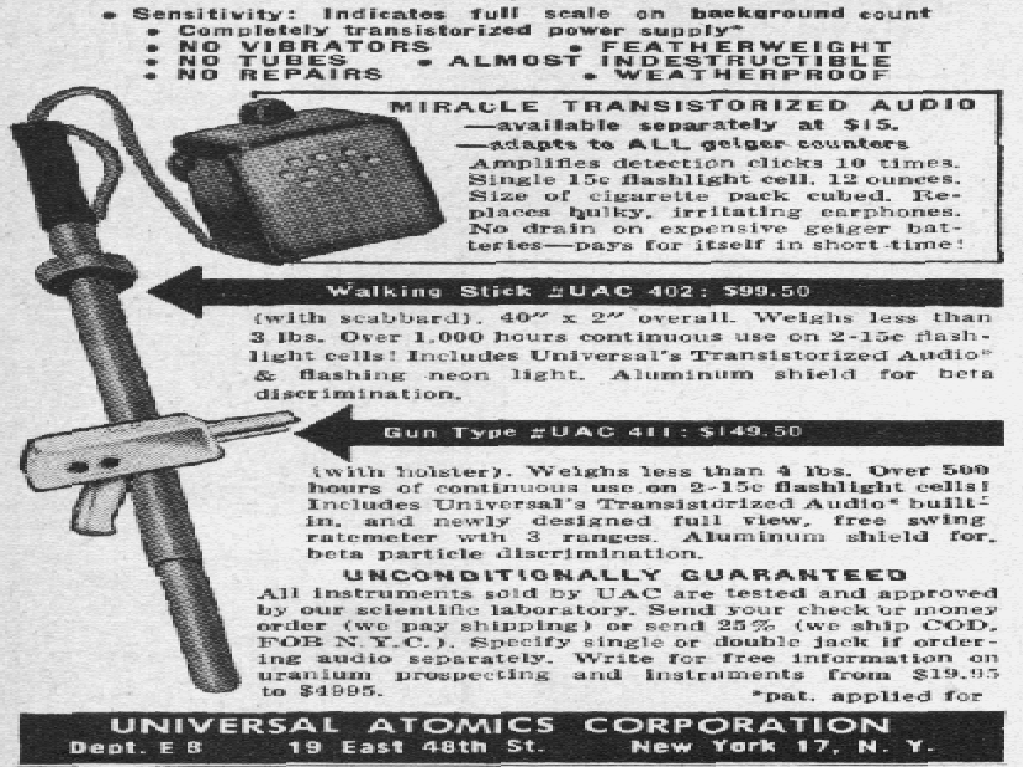
Universal Atomics Ad 1955 in Popular Science
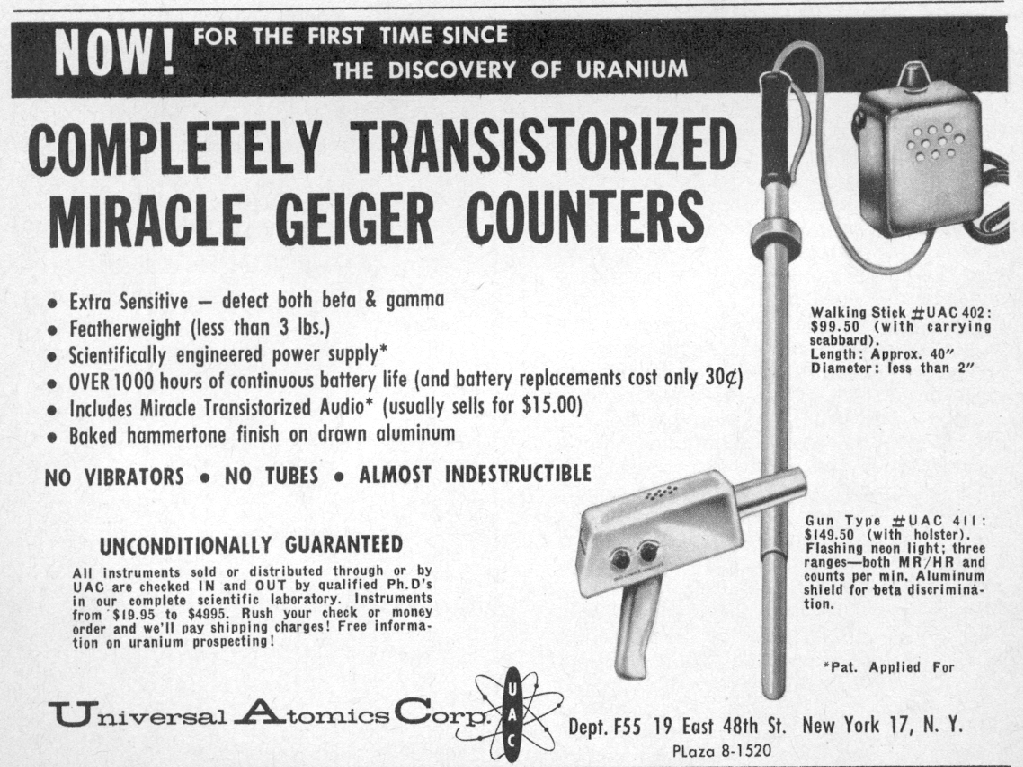
Universal Atomics Corporation Ad 1955
The Model 411 Geiger Gun sold for $149.50 in 1955. This model features a completely transistorized circuit for a GM tube powered by 4 flashlight batteries. It has three ranges from 0.02, 0.2 and 2 mR/h, displays in counts per minute and has full view, free swing rate meter. It also came with a holster and weighed less than 4 lbs. It also had an aluminum shield for betas.
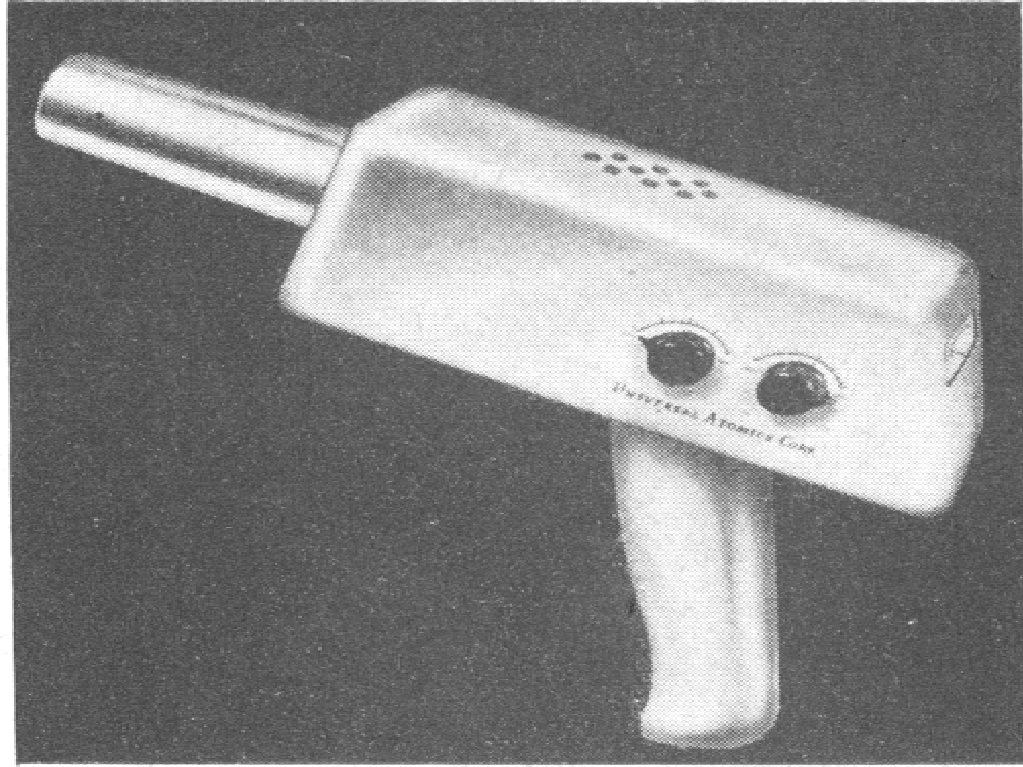
Universal Atomics Model 411 Geiger Gun 1955
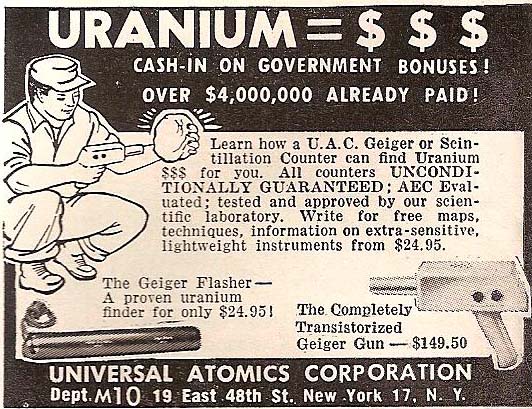
Universal Atomics Geiger Gun Ad 1955
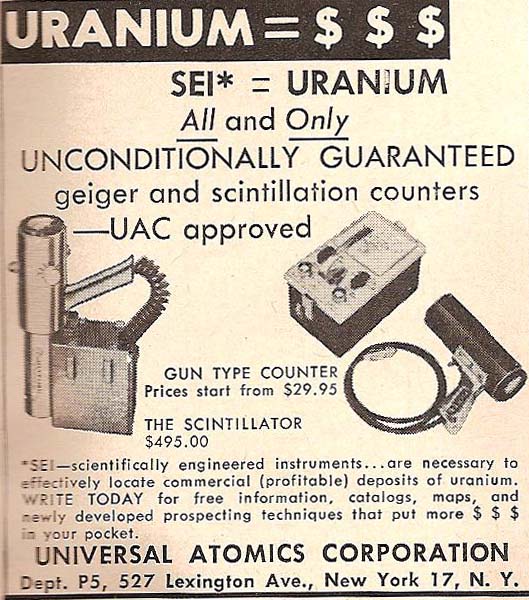
Universal Atomics Ad 1955
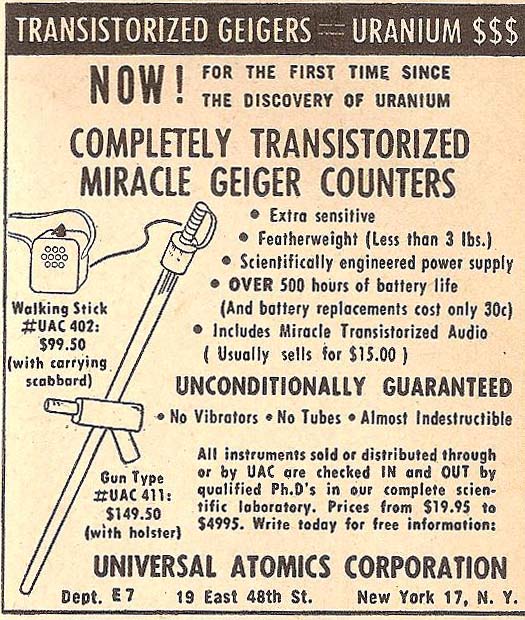
Universal Atomics Geiger Counters Ad 1955
The Model 522 Scintillation counter was introduced in 1956. It was a desktop unit with external probes for use in small labs and hospitals. It can operate from AC or four built-in rechargeable nickel cadmium batteries.
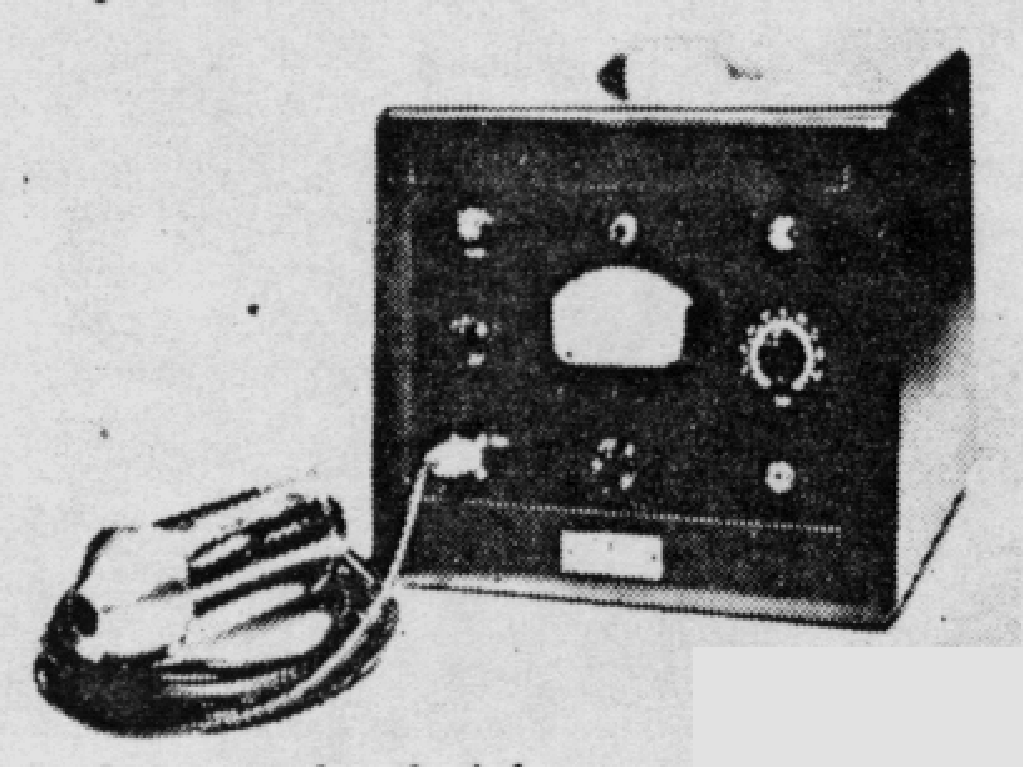
Universal Atomics Model 522 1956
The Gamma Gun was introduced in 1956. It was the first self-contained scintillator. It weighs 6.5 lbs. and used a standard 1.5 volt flashlight battery. It sold for $995.
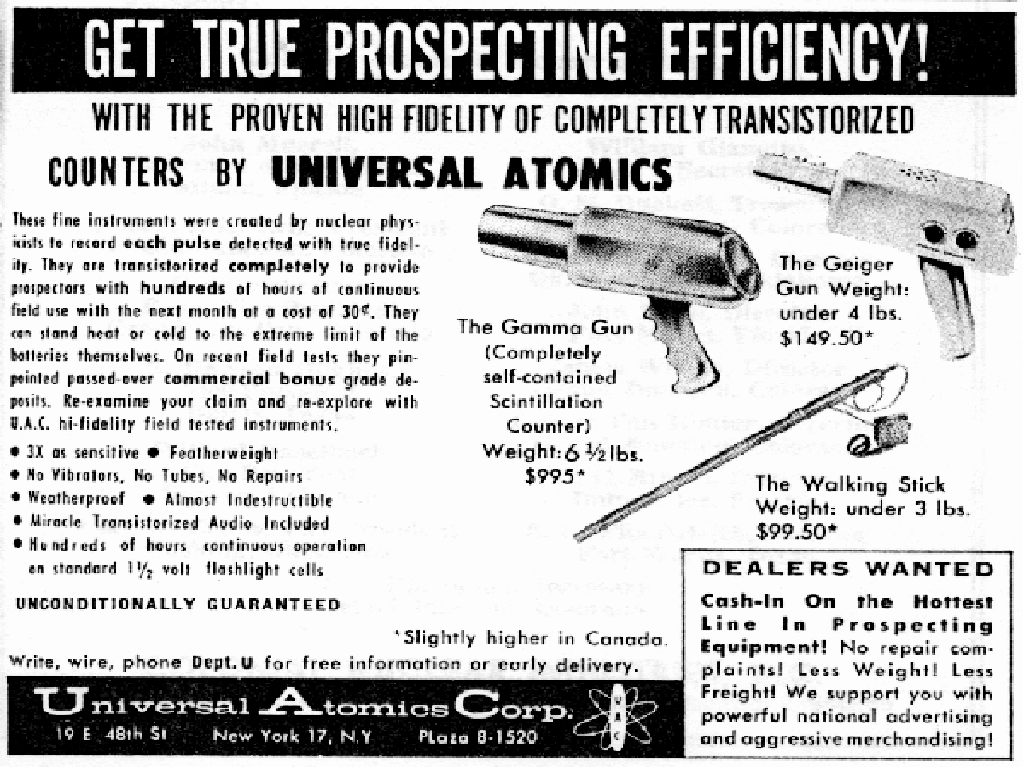
Universal Atomic Corp Ad 1956

UAC Model Gamma Gun 1956
The Model 407 was a radiological survey meter for civil defense and laboratory use introduced in 1957. It was a low priced unit for surveying radiation dosage, leakage and contamination. It had a meter, headphones and flashing light.
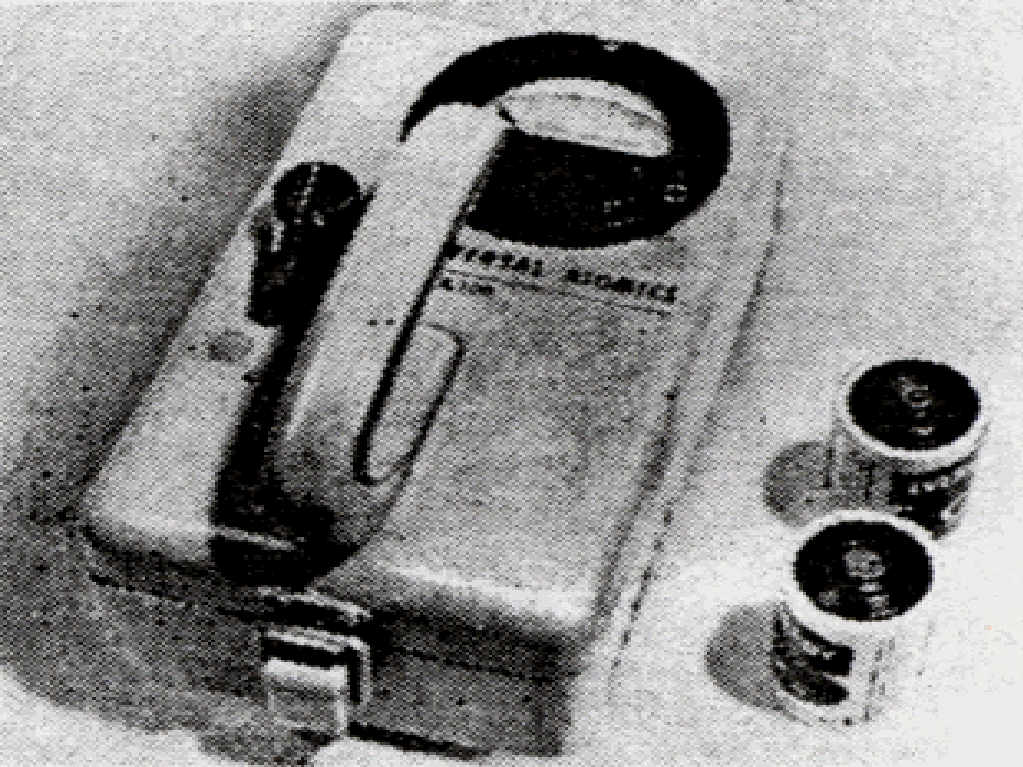
Universal Atomics Model 407 1957
The Model 408 was introduced in 1957. It is a rugged, transistorized monitor for alpha, beta, and gamma radiation. The probe has a end window made of mica. It has three sensitivity ranges from 0.5, 5 and 50 mR/h. It operates with standard 1.5 volt flashlight batteries.
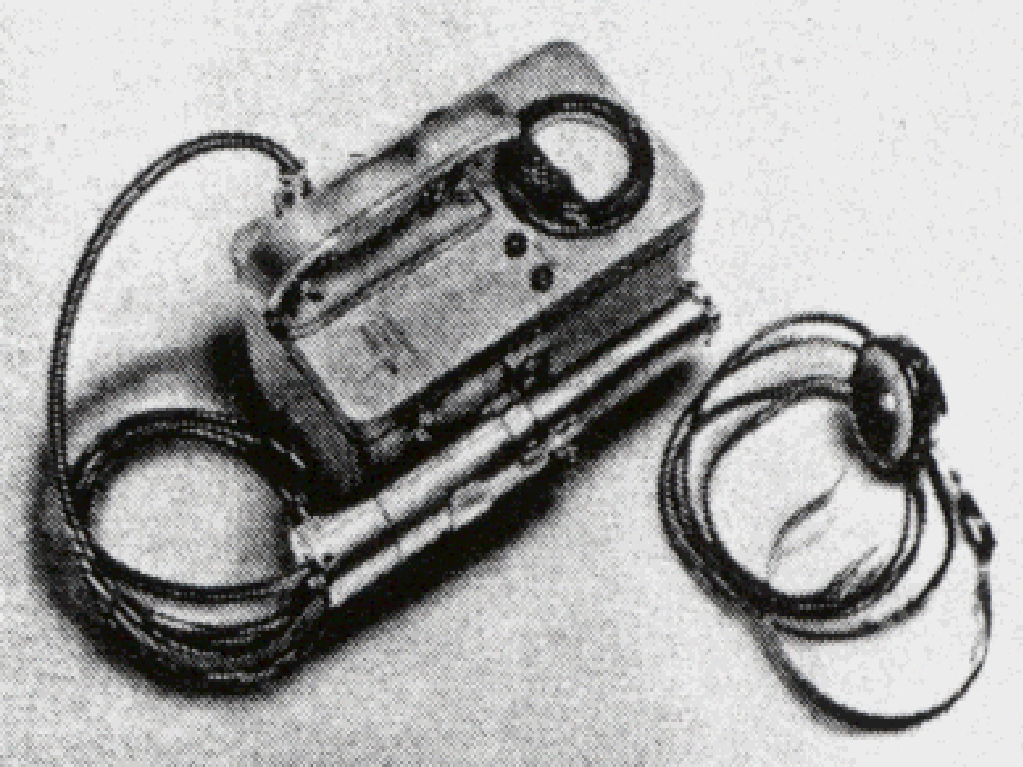
Universal Atomics Model 408 1957
The Model 420A was introduced in 1957 as a console type all purpose laboratory instrument for alpha, beta and gamma radiation. The Model 420B was similar but came in a suitcase. The unit can measure up to 50,000 cpm. It can be operated 24 hours a day and can be set to alarm and flash when a pre-determined radiation dose has been detected. It operates from AC or batteries.

Universal Atomics Model 420B 1957

Universal Atomics Model 420A and 420B Ad 1950's
The Model 522 came in two versions. The Model 522A was a probe desktop unit with probe for hospital or laboratory scintillation counting of patients. The Model 522B was a portable suitcase type unit for use in doctor's offices, at bedside in hospitals or at home, in an ambulance and in laboratories. It could be used for evaluation of thyroid activity, brain tumor localization, blood volume and cardiac output, and treatment monitoring of malignancies. It could be used with lead shielded for directionality. It had a 2" crystal with the lead reducing the opening to 1/4 in, 1/2 in, 1 in and 1-1/2 in. The unit weighed 23 lbs. including lead probe in a watertight 18 in aluminum case with luggage-style handle. It had nickel cadmium cells which can be charged and operated for 50 hours. It can also use 1-1/2 volt D cell flashlight batteries. In 1956, the unit cost $1095 for a 1 in x 1 in sodium iodide crystal or $1395 with a 2 in x 1-1/4 in crystal.
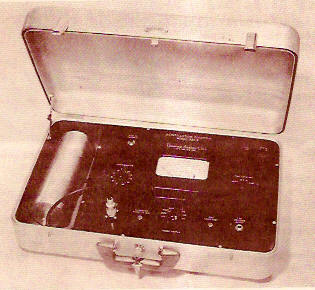
Universal Atomics Model 522AB 1956
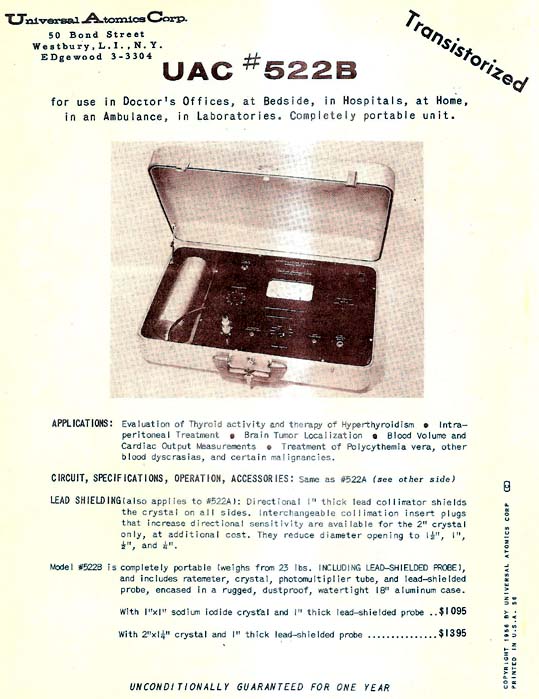
Universal Atomics Model 522B Ad 1956
The Model V-700 was introduced in 1958 as a hand portable radiation monitoring instrument designed "to enable anyone to quickly and easily measure low-level radiation resulting from contamination by radioactive fallout or nuclear explosions". It was an all transistorized unit and operates from standard flashlight batteries. The range is from 0.5, 5 and 50 mR/h and 0-500 cpm with factor scale of x1, x10 and x100. The unit measures 3 in x 4 in x 7 in and weighs 4.5 lbs. The UAC Model V-700T was a more rugged unit and completely transistorized power supply to eliminate costly breakdowns. It was even lighter weighing 3.5 lbs. The unit came in a bright yellow baked gloss enamel and was waterproof, moisture-proof, and fungus proof to meet military specifications.
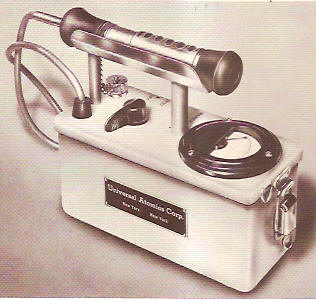
Universal Atomics Model V-700 1956
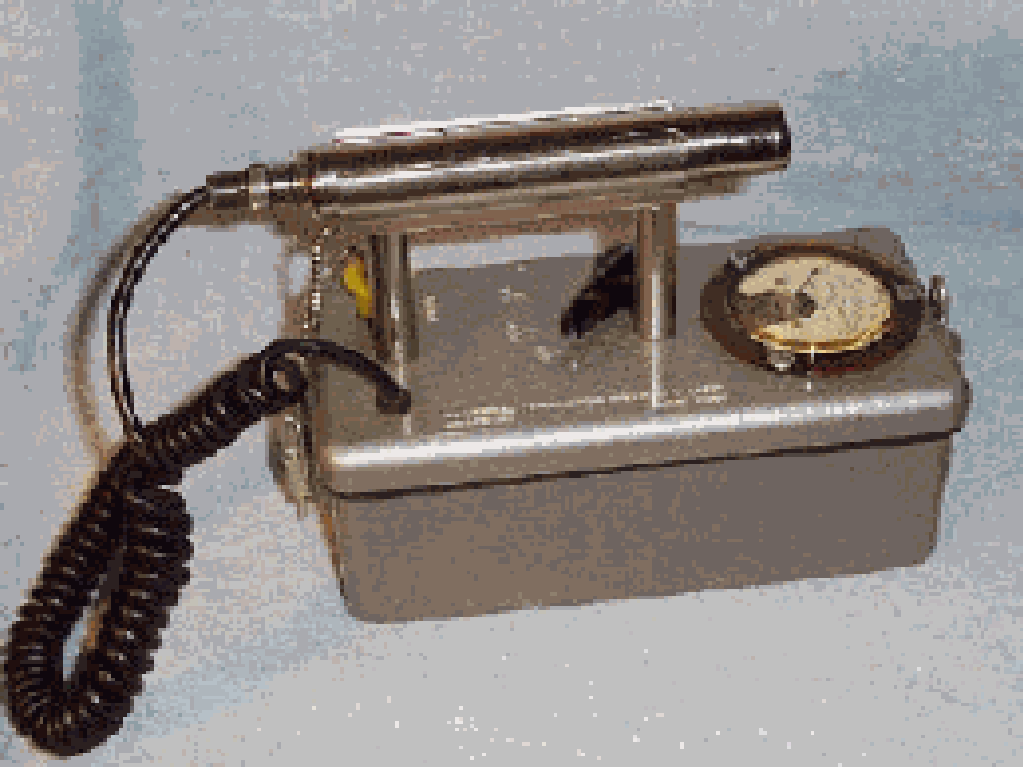
Universal Atomics Model V-700 1958
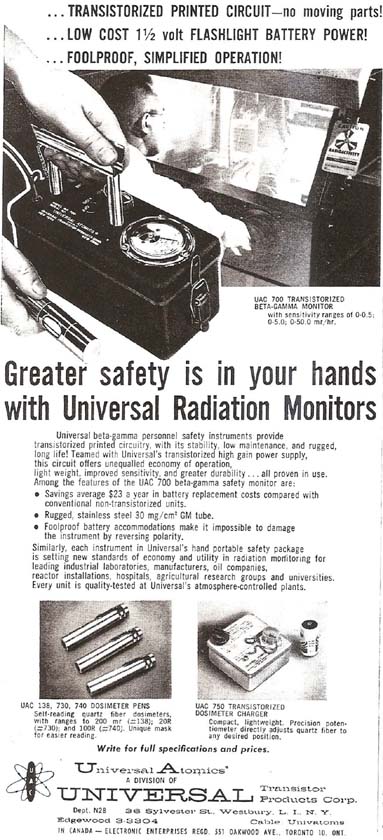
Universal Atomics Model V-700 Ad 1958
The UAC Model V-710 was a gamma survey meter with an air filled ionization chamber in a hermetically sealed enclosure for determining radioactive contamination levels that may result from enemy attack or other nuclear disaster. It has three ranges 0.5, 5 and 50 R/h. The unit measured 7 in x 5 in x 4 in and weighed 3-3/4 lbs. It was bright yellow baked gloss enamel.
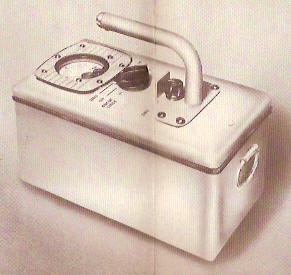
Universal Atomics Model V-710 1956
The UAC Model V-710-44 was a gamma survey meter with built-in dosimeter charger. The dosimeter charge excepts standard dosimeter pens in a few seconds. A UAC dosimeter can be mounted on the meter allowing the operator to read cumulative dosages from 200 mR to 100 R. The unit has ranges of 0.5, 5 and 50 R/h. It has an ionization chamber, air-filled and hermetically sealed in a steel enclosure. It measured 8-3/4 in x 4-3/4 in x 4-1/2 in and weighed 4 lbs. It also came in a bright yellow durable, baked gloss enamel case.
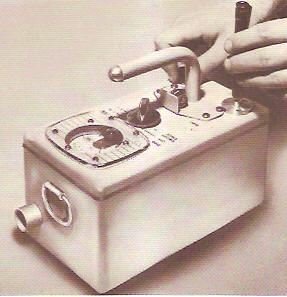
Universal Atomics Model V-710-44 1956
Detector Brochures with Specifications 1956
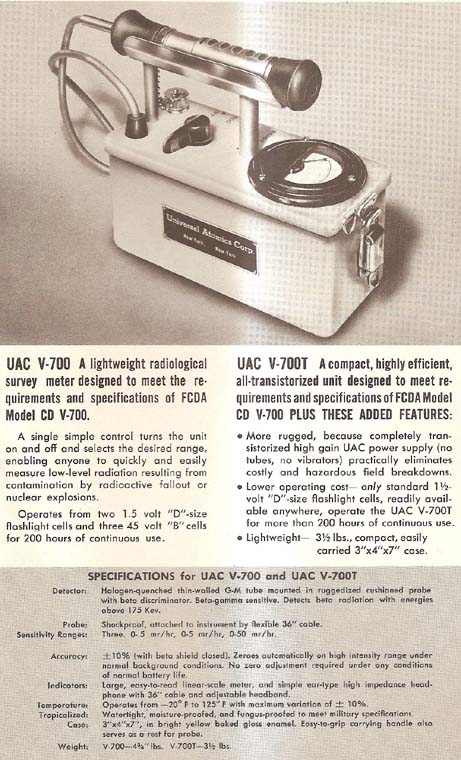
Universal Atomics Model V-700 1956
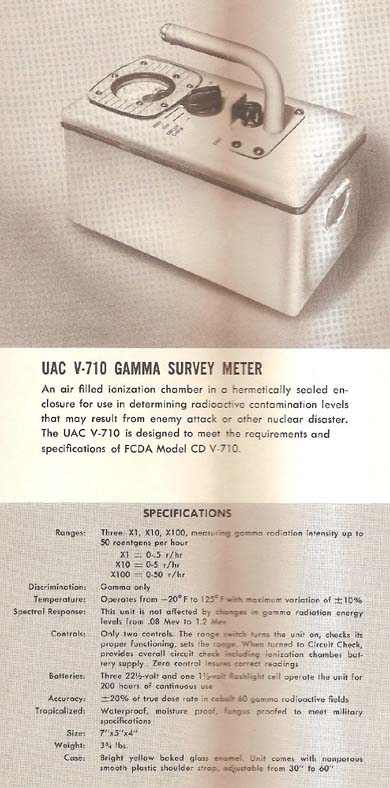
Universal Atomics Model V-710 1956
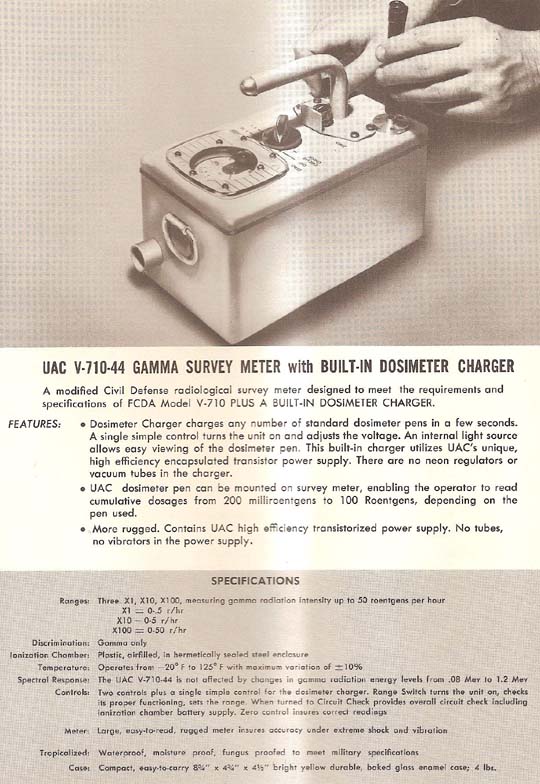
Universal Atomics Model V-710-44 1956
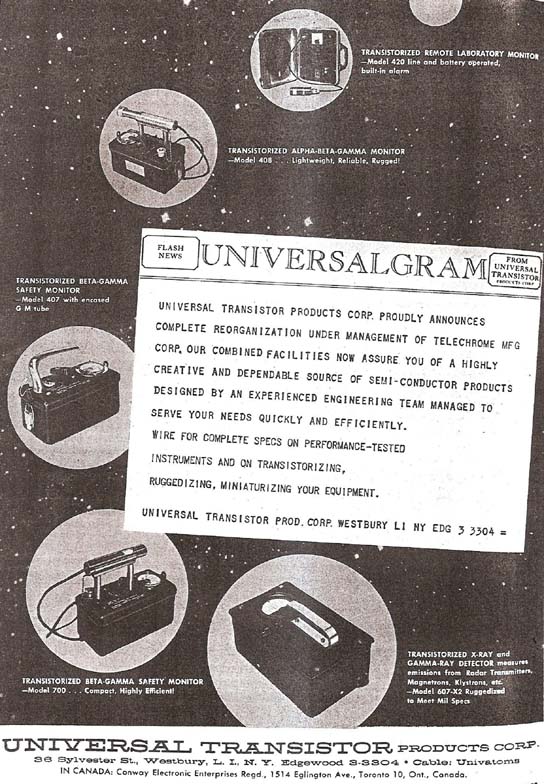
Universal Transistor Products Ad 1959